It’s Time: Beth Haggerty and Caryn Effron Are Tackling Gender Inequality
May 24, 2019 | Filed in: Woman of the Week
Beth Haggerty and Caryn Effron both had enviable careers with decades of experience when they met in the summer of 2016. Beth was a serial entrepreneur who had built, managed, and sold media companies; Caryn was a Senior Managing Director specializing in commercial real estate finance. Although they had beaten the odds and risen to the top of their respective industries, they wondered: Why were they still the only women in the conference room—the exception, rather than the rule? Recognizing each other as kindred spirits, they launched their community-driven leadership platform, Declare (formerly Parity Partners), to take on the fight for gender equity in the workplace. We spoke with Caryn and Beth about leveraging talent, generational change, and admitting “it’s time.”
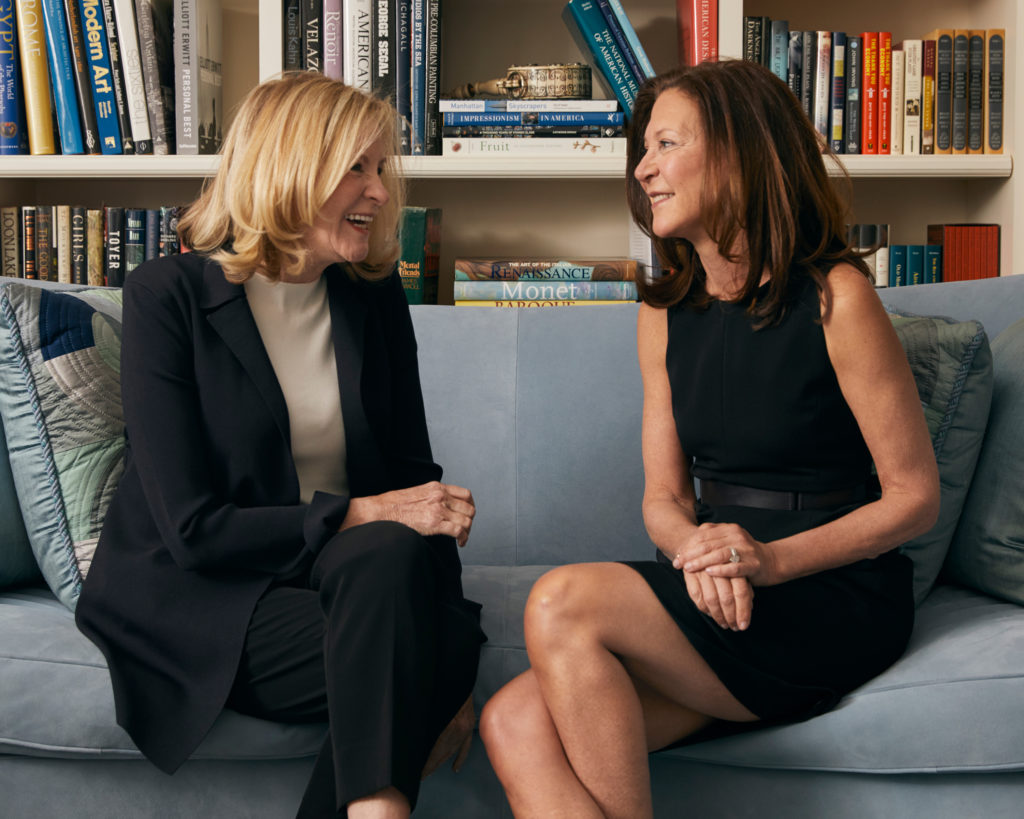
Beth (left) wears the Eileen top, the Merritt jardigan, and the Mejia pant. Caryn (right) wears the Constance dress and Double Rectangle belt.
Beth: WHEN I WAS YOUNGER, COMPANIES GAVE YOU PSYCHOLOGICAL TESTS in which you had to draw a picture of yourself. I always drew myself with kids and a briefcase in one hand. I was driven to accomplish, succeed, expand, and ascend. But once you succeed personally, it’s time to help others succeed. Declare is our attempt to do that at scale. The idea was born out of a shared frustration and moment of awakening. It was the summer of 2016—before the Women’s March, #MeToo, #TimesUp. Women were just beginning to gather in small groups to talk about ongoing gender imbalances. Caryn and I met at a dinner about helping women break the glass ceiling. Then we scheduled a follow-up breakfast with a few of the women who attended.
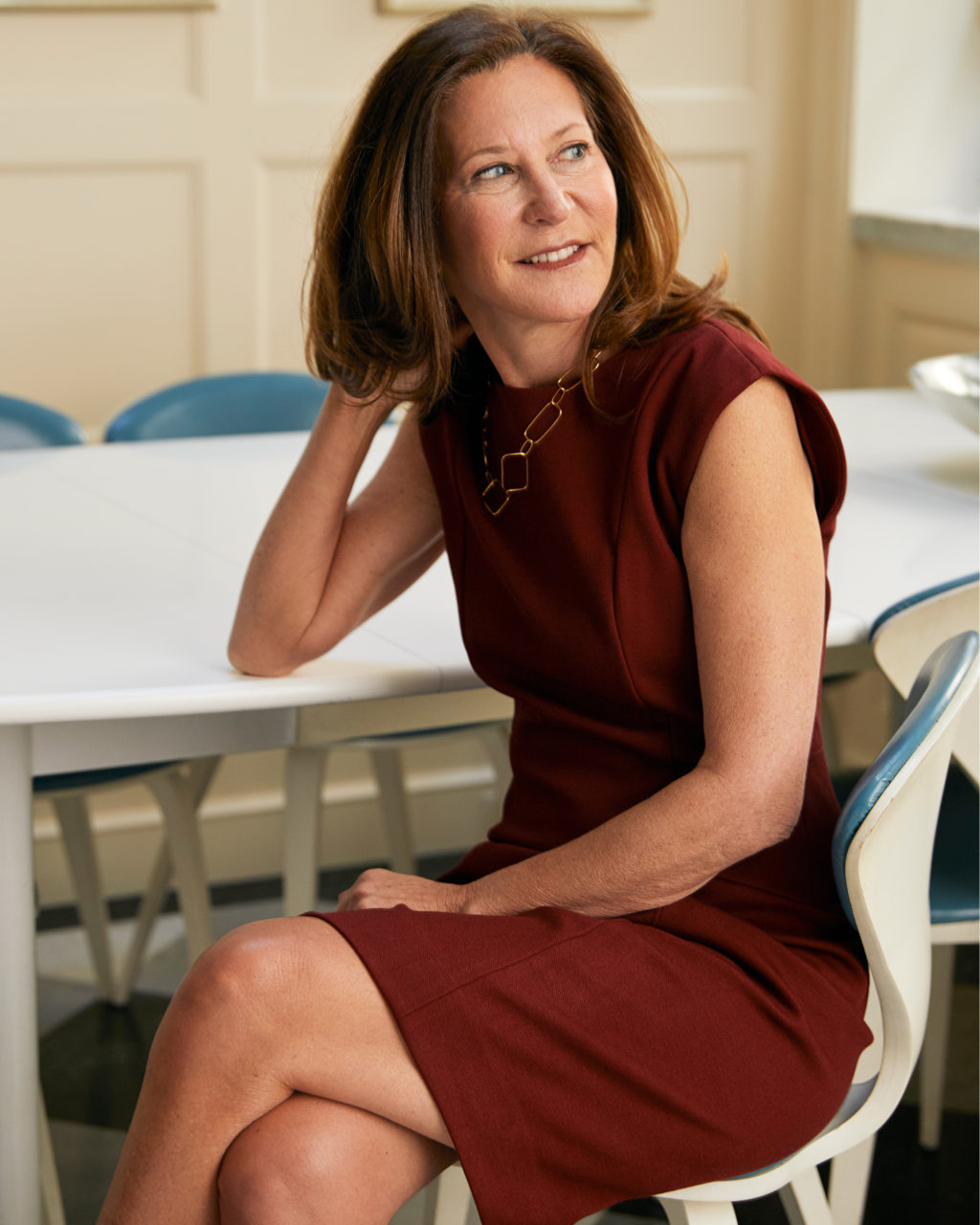
Caryn wears the Giovanna dress and the Europa necklace.
Caryn: I WAS GETTING READY TO GO TO THAT VERY BREAKFAST when I received the list of incoming associates at my real estate firm. There was not a single woman on the list, so I marched into our COO’s office to ask why. He said, “Those are the resumes I got.” When I got to breakfast, I said, “If one more man says ‘I want to hire women but I just can’t find them,’ I’m going to scream.” Clearly qualified women were out there, but there was an ongoing disconnect between the talent and the opportunity.

Beth wears the Keiko dress and the Single Bezel necklace.
Beth: DATA ABOUT THE OBSCENELY SMALL AMOUNT OF CAPITAL that reaches female-founded businesses was available. At the same time, there was new data showing that gender-diverse teams perform better. That morning, we were just a few of the many women sitting around tables asking, “So, why aren’t things changing?” But it was a catalyzing moment—we realized we were in a position to leverage our experience and our networks to create that change.
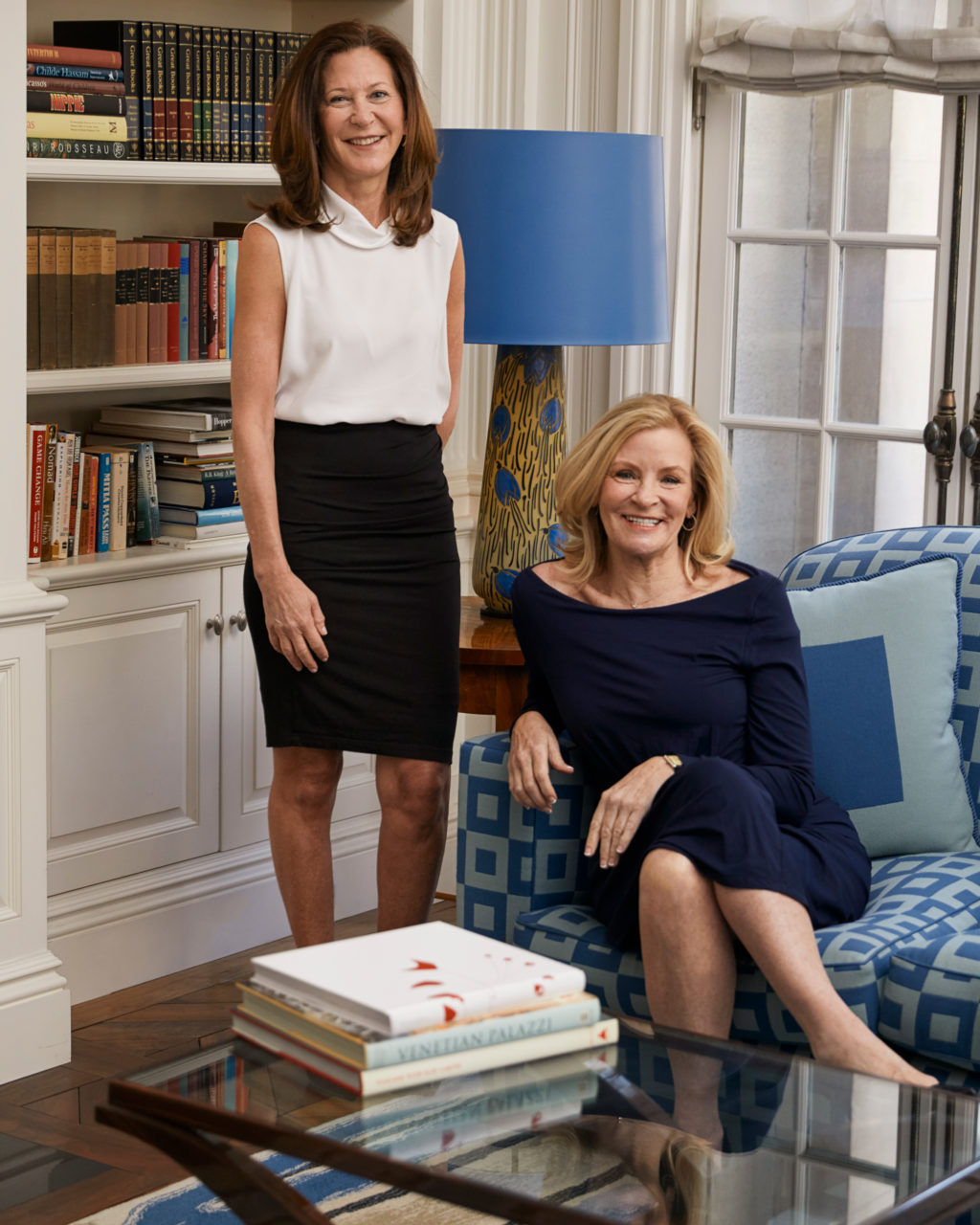
Caryn (left) wears the Lise top and the Soho skirt. Beth (right) wears the Keiko dress and the Single Bezel necklace.
Caryn: I ALWAYS FELT IT WAS IMPORTANT TO MAKE MY OWN MONEY so that I could be independent. It was part of who I was. I had a strong work ethic, and I wanted to be able to rely on myself. I was lucky to fall in love with real estate finance and to have bosses and mentors who understood that as long as I delivered, I could manage my own time. If I had to work from home on a Friday, I didn’t have to feel bad about it. That allowed me to balance a really full career with raising three kids. I want that kind of flexibility for all women—so they can stay in the workforce during their childbearing years, and so that their talent isn’t lost.
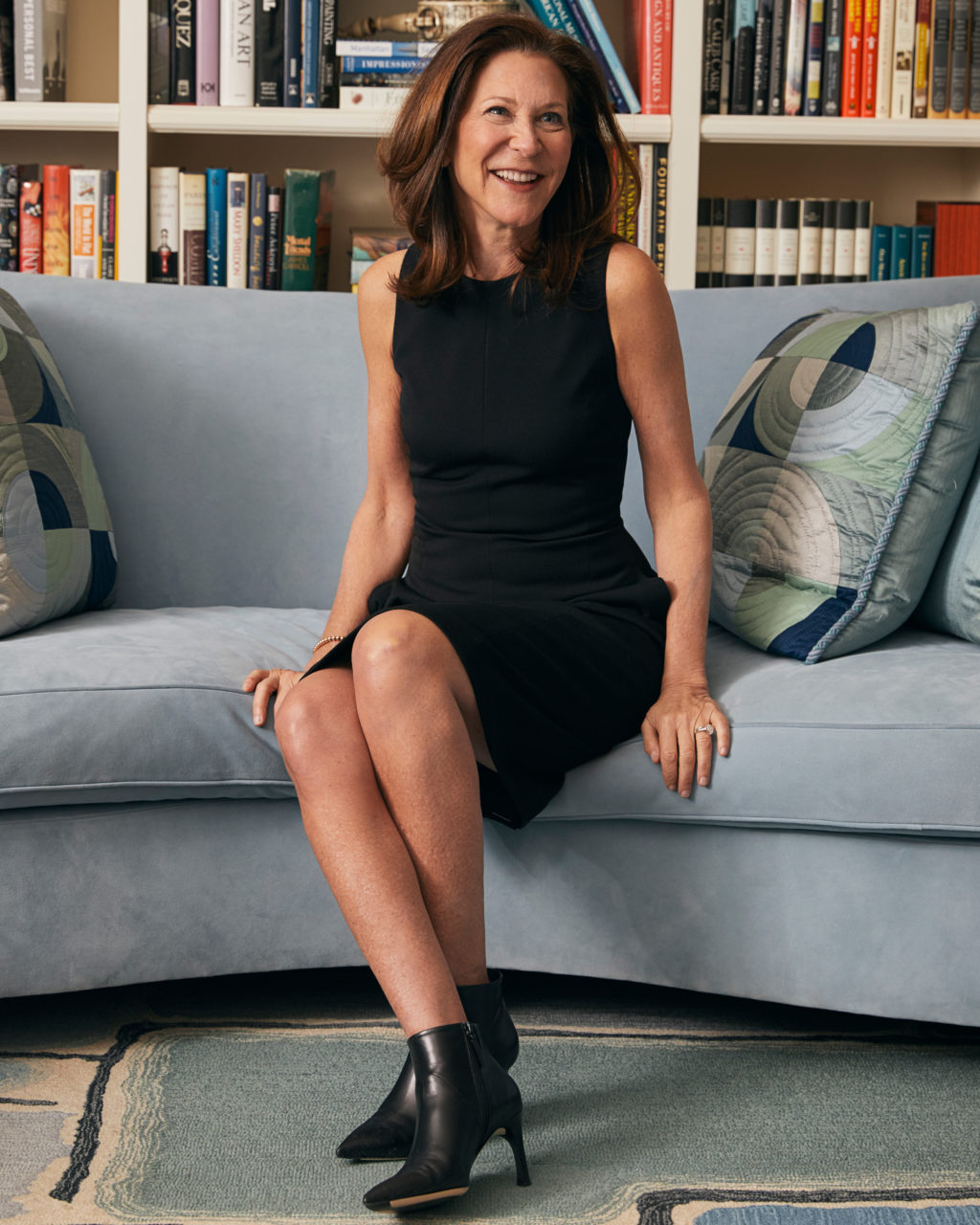
Caryn wears the Constance dress and the Vivien boots.
Beth: I WAS TYPICAL OF WOMEN IN MY GENERATION in that I put my head down and tried to work harder and smarter than everyone else. As I ascended through the ranks, I was fairly unaware of gender bias. We didn’t really acknowledge it. If you were a woman who eventually had a C-level job, the feeling was, “Wow, you really made it,” because you were one of just a few. At the time, it didn’t occur to me that something was wrong because so few women were making it to that level. It wasn’t until I was in my late thirties and early forties, raising money and putting together boards, that I realized, “I’m the only woman in the room. My board, my investors, the other executives—they’re all men.” The rising generation of women seems much more aware of gender inequity and much more committed to solving the issue together. It’s such a positive development.
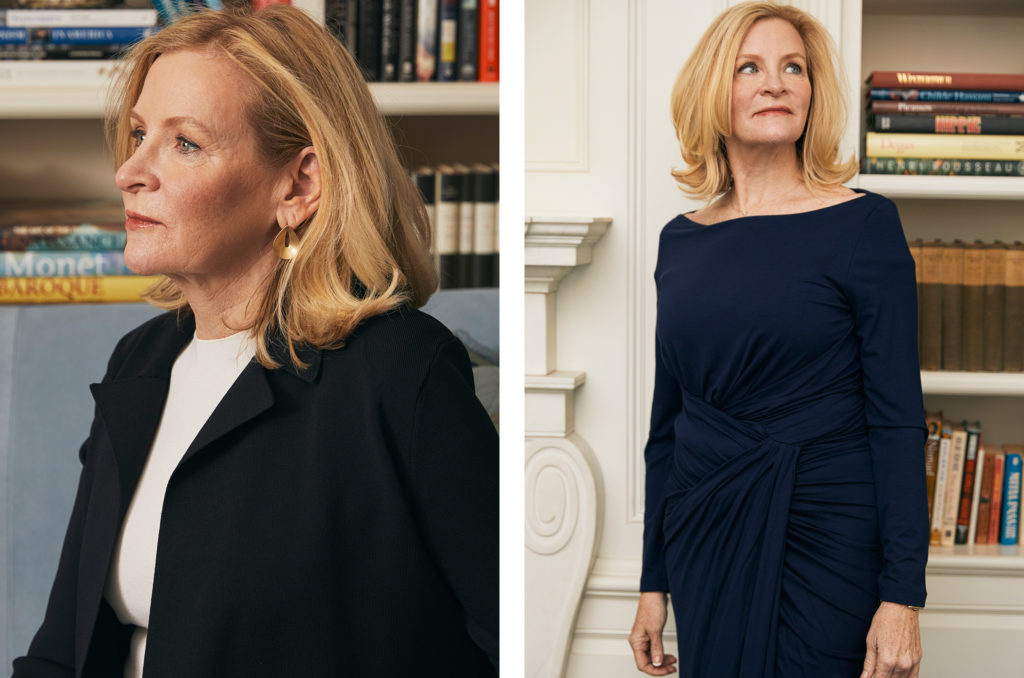
Beth wears the Eileen top and the Merritt jardigan (left) and the Keiko dress and the Single Bezel necklace (right).
Caryn: THE WOMEN’S MARCH, #TIMESUP, #METOO—all of these things helped bring the gender inequity conversation out of the closet. It’s okay to have these conversations in public now. You don’t feel bad about having them; you feel good. At Declare, we’re a vessel for this movement. We’re laying pathways for women to empower each other and lead the change. We want to create a network effect where Declare members bring their ideas, learnings, and momentum to their companies and actually propel institutional change. We’re just the platform; women are the ones moving things forward.
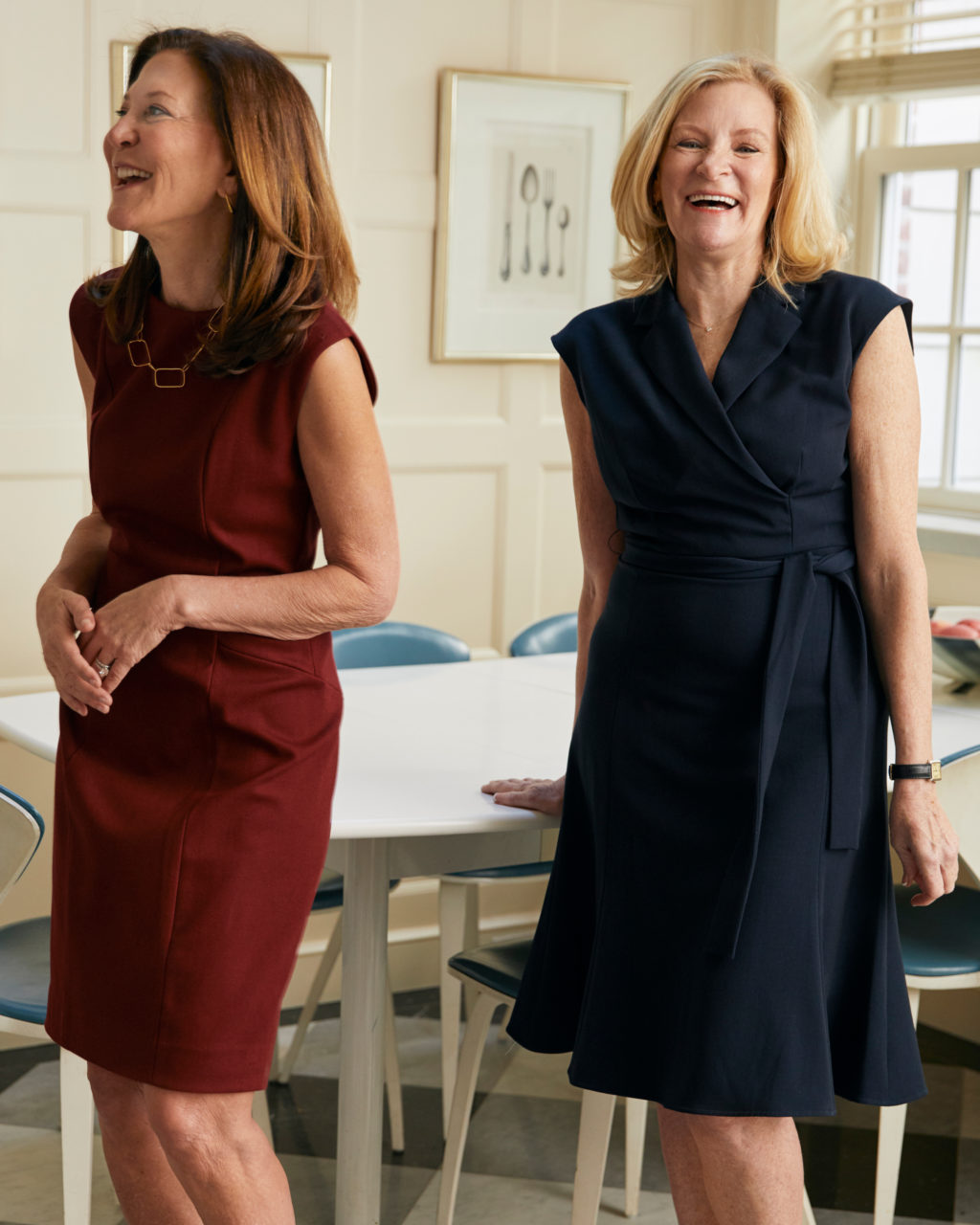
Caryn (left) wears the Giovanna dress and the Europa necklace. Beth (right) wears the Isabelle dress.
Beth: DECLARE IS BUILT AROUND GENEROSITY OF HEART AND SPIRIT, meaning: we’re all here to help each other succeed. It’s not about antagonism or burning institutions down. It’s about pooling experience and skills to further all women. I’m in my fifties, so my experience is different than that of a 30-year-old, but we still have a lot to teach each other. We want to equip our members with the skills and confidence to embrace leadership, build their personal brands, have difficult conversations with their bosses, or become changemakers within their organizations. Members of our community leverage each other to figure all that out, rather than going it alone.
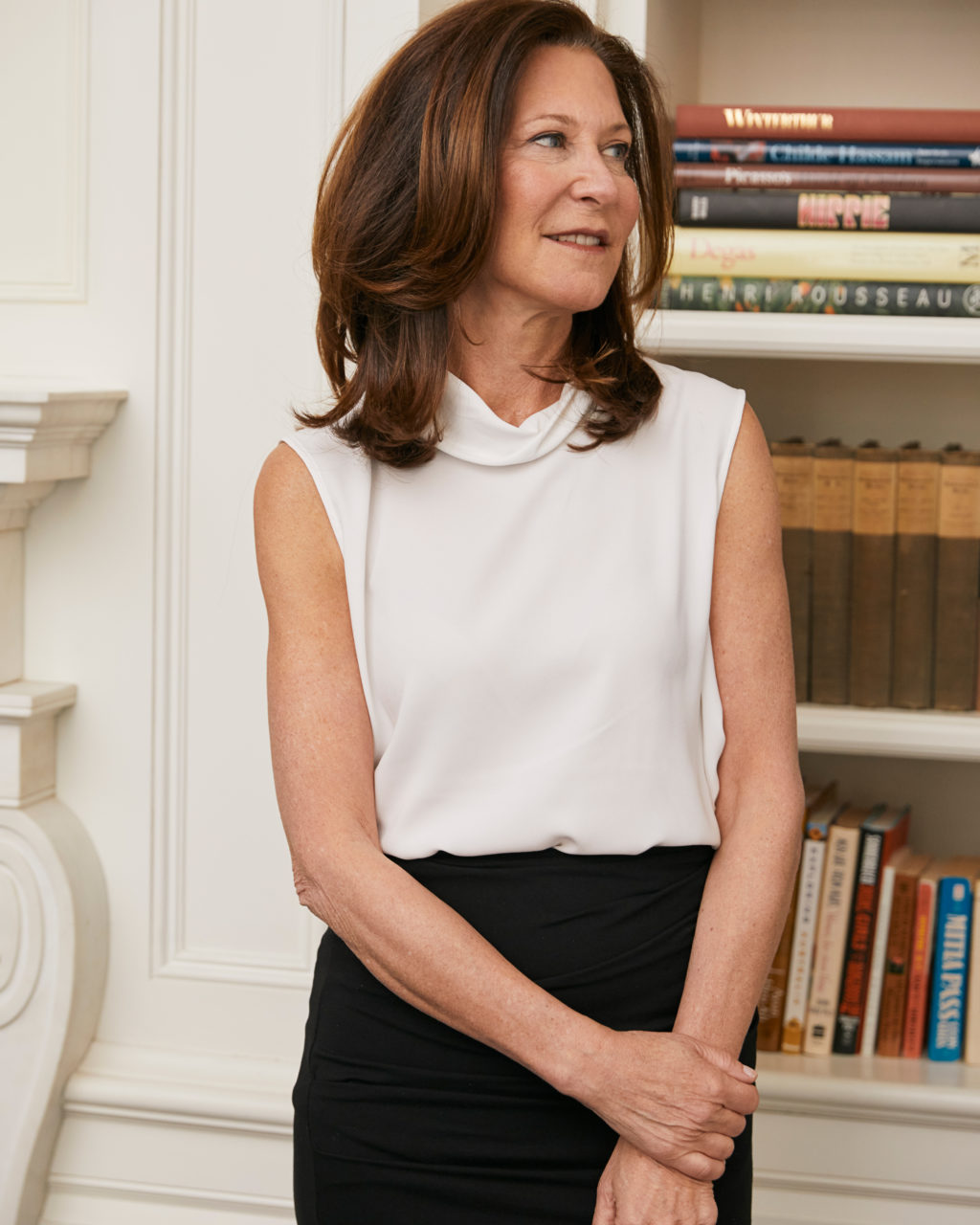
Caryn wears the Lise top and the Soho skirt.
Caryn: WE NOW KNOW THAT DIVERSE, INCLUSIVE LEADERSHIP TEAMS PERFORM BETTER. They create cultures that are open and dynamic, and today’s talent wants that. When it comes to inspiring leadership at Declare, we think about incorporating diversity of all kinds: gender, ethnicity, educational backgrounds. If you believe in diversity, you also have to believe in diversity of thought, so we’re very intentional and strategic about that.

Beth (left) wears the Eileen top, the Merritt jardigan, the Mejia pant, and the Ginger pumps. Caryn (right) wears the Constance dress, the Double Rectangle belt, and the Vivien boots.
Beth: IF WE CAN SOLVE GENDER INEQUITY, THEN WE CAN LEVERAGE THE ENTIRE TALENT POOL to solve other pressing issues: curing cancer, climate, immigration. As of now, there’s so much untapped talent. What if we put it to use? We would accelerate our ability to solve so many other issues. It’s that simple. We have to stop fighting the same fight and make room for women to step into leadership roles. It’s time.
Photographs by Heather Moore. Styling by Alison Turka.





